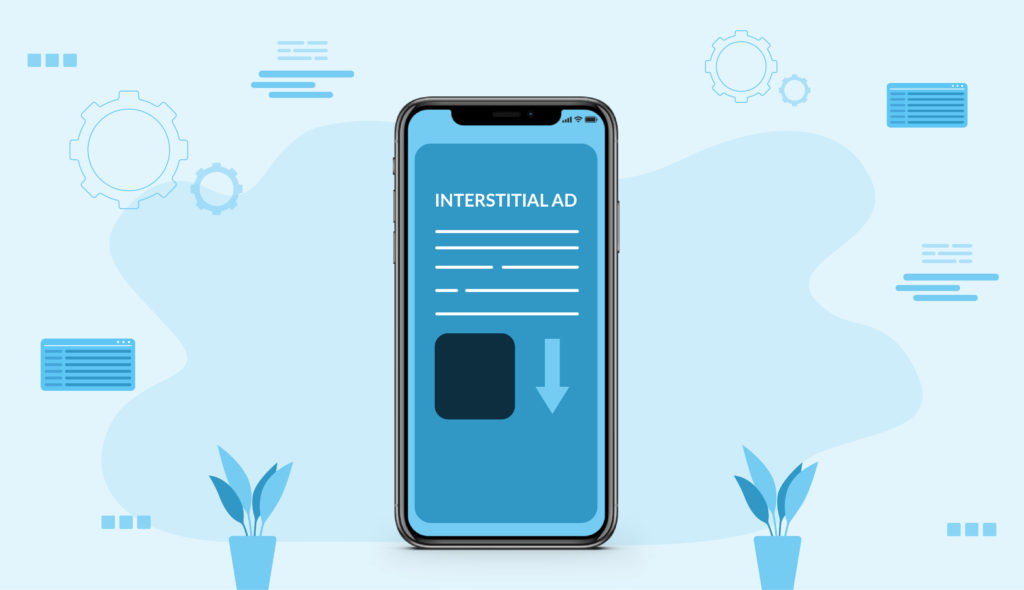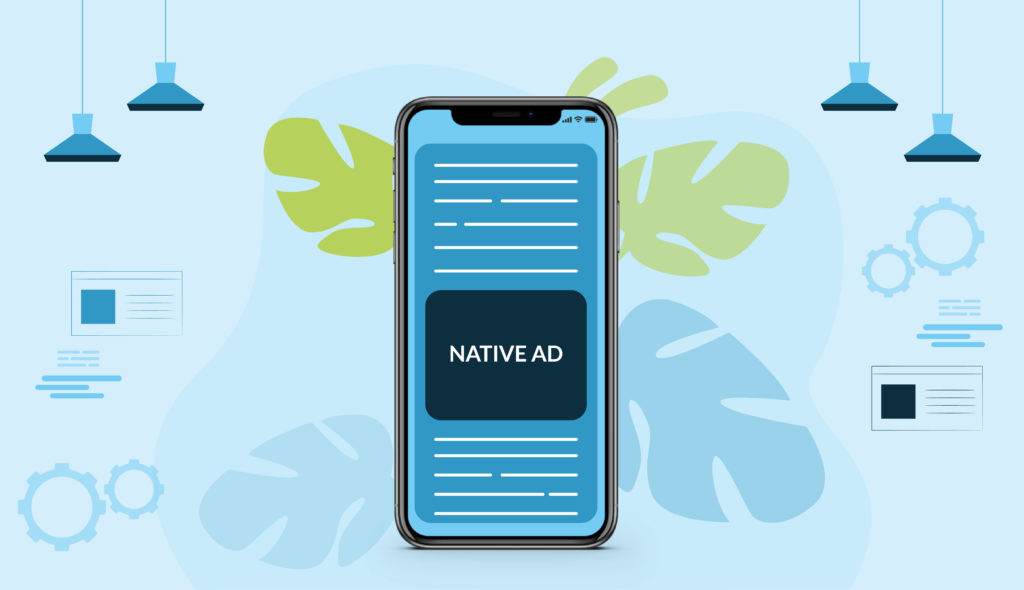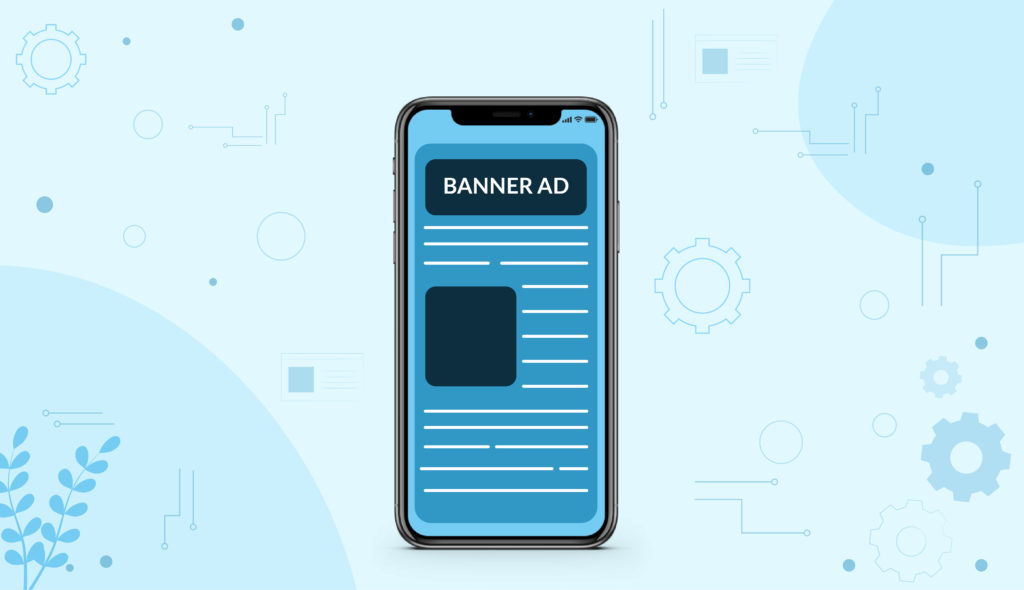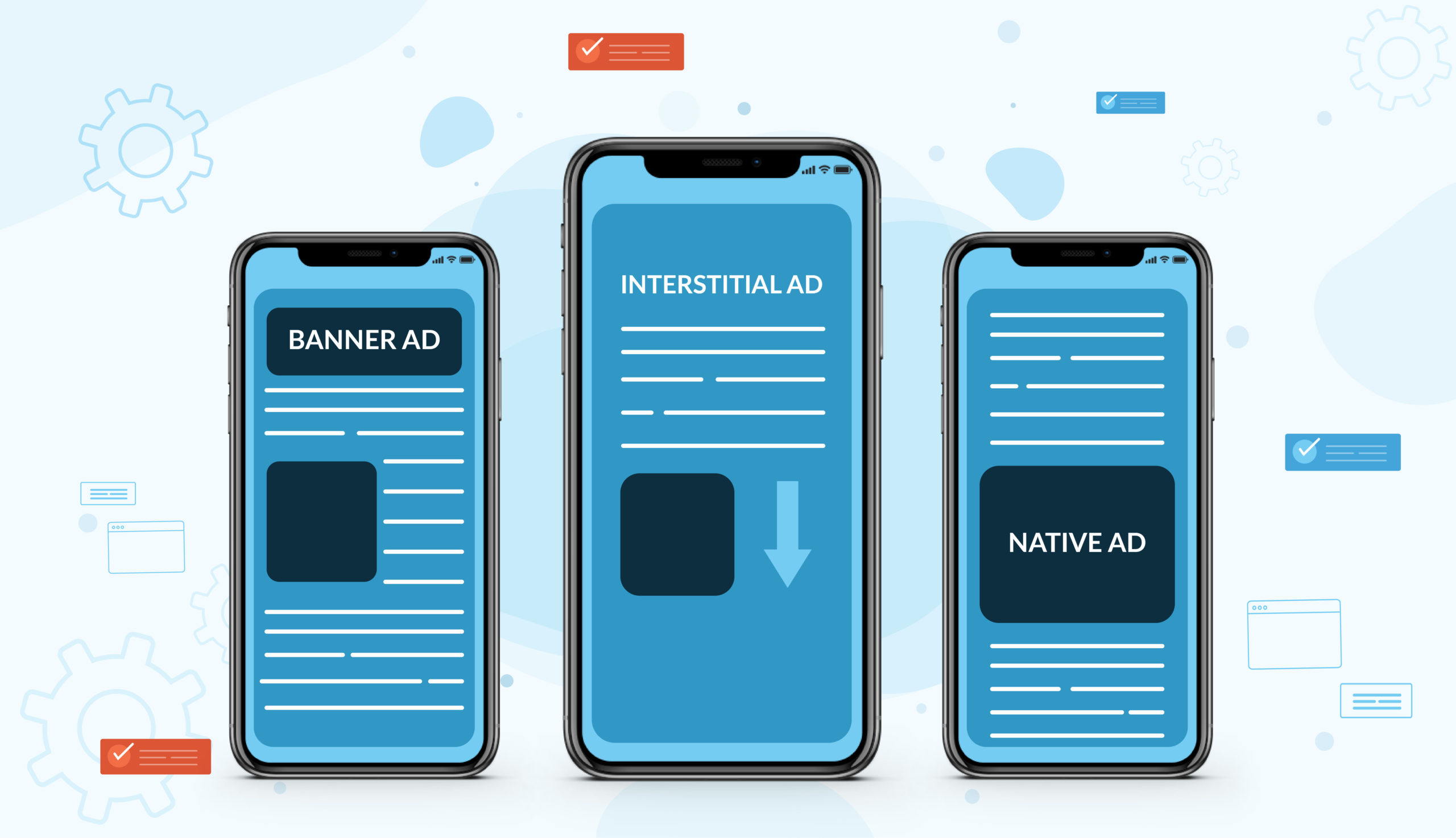The ecosystem of app ad categories includes many options. These ad units are served in two ways: in-app advertising and mobile web advertising. The goal? Drive user acquisition (UA). To achieve those goals, what ad unit type will work best for you? Your ideal ad mix will vary based on your target audience, category, and budget. If you’re just learning about app advertising, you’ll want to know about interstitial ads, native ads, and banner ads.
In-App Ads vs. Mobile Web Advertising
Looking at the two channels to launch ads, what’s the difference? And what’s the opportunity?
Approximately 89% of mobile usage time is in-app. That signals an exceptional opportunity to engage a large audience. Additionally, in-app ads typically provide a better user experience. It’s less distracting and more engaging. In-app ads allow you to address various goals, including increasing conversions, improving user retention and engagement, and generating revenue.
Mobile web advertising is easier on the creator because the ad units are standard. They work well for cross-platform ad campaigns. You can reach an audience across many, with compatibility not an issue, as most ads are responsive and adjust to the right dimensions. In most situations, this type of ad deployment is cost-effective and scalable.
Defining Interstitial Ads, Native Ads, and Banner Ads
These three ad units are popular with mobile app advertisers. So, what’s the difference, and when should you use them?
What Are Interstitial Ads?


An interstitial ad is full-screen and interactive. They play in transition points within apps, such as loading or closing, game level breaks, or other regular pauses.
Common sizes include: 320×480, 480×320, 1024×768, and 768×1024.
These ad units fit mobile devices adeptly. They also allow you to obtain a user’s undivided attention. Because of this, you have lots of opportunities to develop some inspiring creative. As a result, you could see greater engagement. However, you want to ensure that there is capping on frequency.
In deciding when to place these ads, you should be thoughtful to ensure less disruption.
Interstitial Ad Pros
- More ad space for more in-depth messaging
- Visually driven
- Impressions and CTR can be strong
- Interactive
What Are Native Ads?


Native advertising can appear in different sizes and forms. They get their name from blending into their surroundings, so they don’t look like an ad. It’s usually relevant and valuable to the audience.
Common sizes include: 320×480 and 300×400.
Placement is as an icon, feed, or in-stream. Icon ads are displayable within apps with multi-tile layouts (e.g., news and entertainment). Feed ads can meld into user-generated content in a chat list. In-stream ads mimic an app’s content feed, which works well in social networking apps.
These ads are non-disruptive and relevant to what’s around them, leading to higher CTRs.
You can integrate visuals, headlines, and descriptions to get the user’s attention.
Native Ad Pros
- Appropriate for the content around them.
- Higher CTR
- More engaging than other ads
- Superb user experience
What Are Banner Ads?


Banner ads are the most common ad category. They are simple and often yield higher CPMs (cost per mille) through strategic placement. They are static units that appear at the top or bottom of the screen.
Common sizes include: 320×480, 300×250, 320×50, 728×90, 768×1024, and 300×600.
There is minimal space on these ad types, so they are often good for brand awareness. In designing them, balance eye-catching with becoming a distraction. Focus on highlighting a key feature or providing a strong CTA with little copy.
Banner Ad Pros
- Available on all screens
- Budget-friendly
- Easy to deploy
- Non-intrusive for the user
What Ad Categories Are Right for You?
These are three of the most popular app advertising unit types. There are, of course, many other options with rewarded advertising. No matter what your specific goals are around promoting your app or brand, it’s likely you’ll want to use all three of these across your campaigns.
Working with our app advertising team, we can guide you and develop unique and custom strategies to help you achieve those goals. Contact us today to get started.


